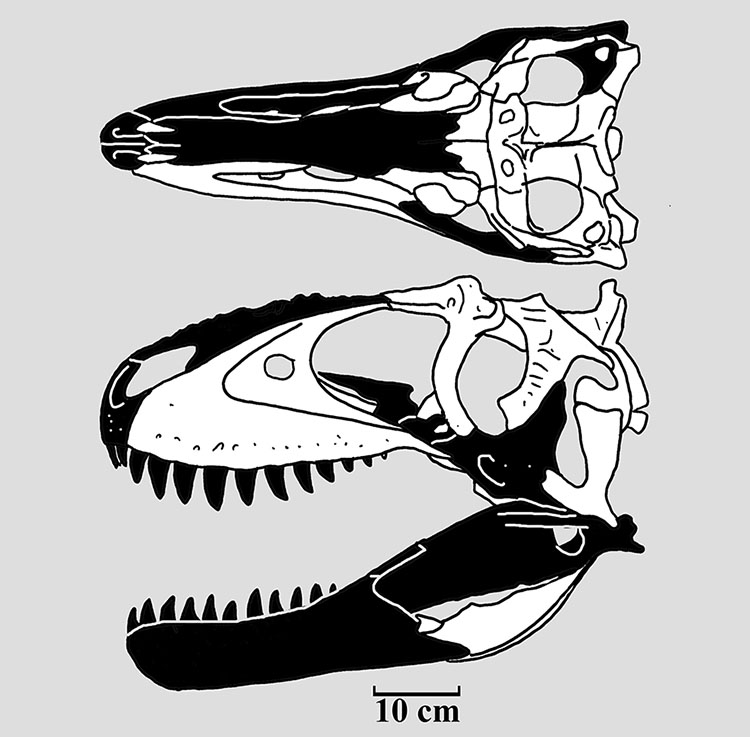
Genus: Teratophoneus CARR, WILLIAMSON, BRITT & STADTMAN, 2011
Etymology: Greek, teratos, "monster" and Greek, phoneus, "murderer"; in reference
to the presumed predatory habits of this theropod.
Species: curriei CARR, WILLIAMSON, BRITT & STADTMAN, 2011
Etymology: In honor of Dr. Philip Currie, in recognition of his scientific
contributions to the knowledge of theropod osteology and systematics.
Holotype: BYU 8120/9396, 9120/9397, 826/9402, 9398, 13719 (The holotype includes a partial skull and skeleton of one individual, but more than one specimen number was assigned to the bones).
Locality: Grand Staircase-Escalante National Monument, Kane County, Utah.
Horizon: Kaiparowits Formation.
Biostratigraphy:
Age: Judithian age, Late Campanian Stage, Senonian subepoch, Upper Gulf Epoch, Late Cretaceous.
Material: Brakedown as follows;
BYU 9120/9396: Left lacrimal, right jugal, right frontal, right squamosal, left otoccipital and prootic, right otoccipital, right basiphenoid, both quadrates, left articular, cervical vertebra, left scapula and left coracoid.
BYU 8120/9397: Left humerus and left ulna.
BYU 826/9402: Left maxilla.
BYU 9398: Left dentary.
BYU 13719: Left femur.

Note: UMNH VP 20200: Has a pathologic right fibula, and borkend and rehealed tibia (WIERSMA, & LOEWEN, 2013).
Referred material:
= cf. Teratophoneus curriei TITUS, KNOLL, SERTICH, YAMAMURA, SUAREZ, GLASSPOOL, GINOUVES, LUKACIC & ROBERTS, 2021
Locality: Rainbows and Unicorns Quarry (RUQ), Kaiparowits Plateau area, Grqnd Staircase-Escalante National Mounument, Kane County, Utah.
Horizon: Middle Member, Kaiparowits Formation.
Biostratigraphy:
Age: Judithian age, Late Campanian Stage, Senonian Subepoch, Gulf Epoch, Late Cretaceous.
Material:
Numbers: Not given: Fragmentary skull elements, fragmentary skeletal elements of at least 4 individuals of various sizes.